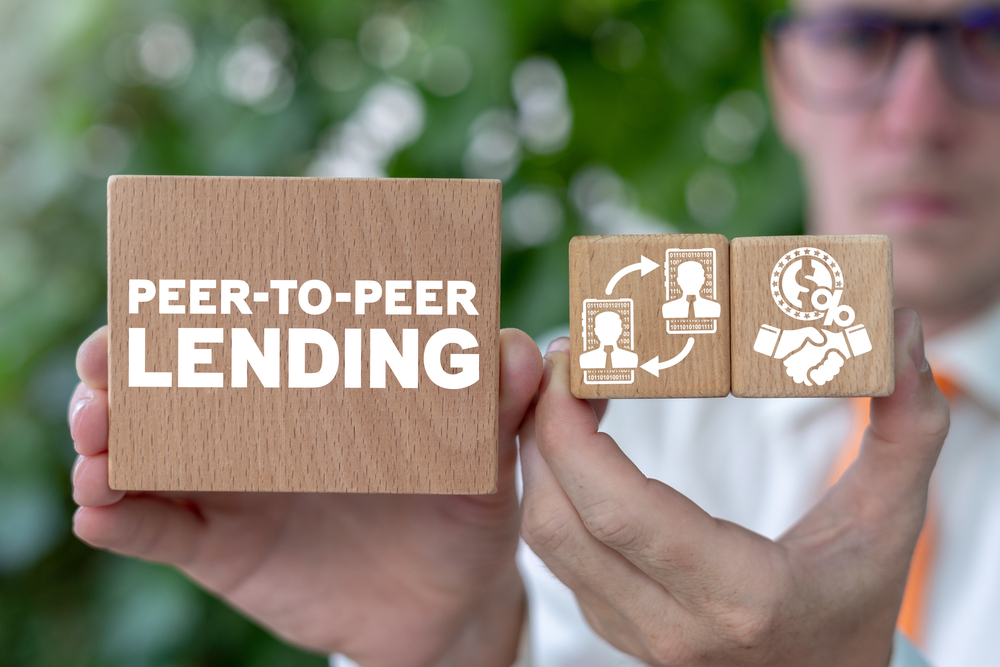Within the ever-changing world of finance, investment staples like stocks and bonds are undergoing a radical makeover. Peer-to-peer (P2P) lending is a novel paradigm that enables individuals to engage in direct lending without the need for traditional financial intermediaries, placing it at the forefront of this financial evolution. This new investment option has quickly become well-known, offering a unique set of advantages to lenders and borrowers alike. In the investigation that follows, we will examine P2P lending, figuring out its nature, workings, and the strong arguments supporting its potential as a modern investment option. P2P lending appears as a disruptive force as the financial horizon keeps expanding, changing the way people borrow and invest in this dynamic economy.
Understanding Peer-to-Peer Lending
Peer-to-peer (P2P) lending is essentially a crowdfunding system that connects eager investors with borrower borrowers. Online platforms are essential intermediaries in this digital paradigm, managing the full loan cycle from loan origination to loan repayment. P2P lending platforms are digital-only platforms that deviate from the traditional banking model. They provide a convenient and effective way for people to invest their money or obtain capital for their needs.

How it Works
- Registration and Profile Creation:
Peer-to-peer (P2P) lending begins with the registration of lenders and borrowers on specialized platforms. To do this, comprehensive profiles that highlight their goals and financial background must be created. Lenders present their preferred investments, while borrowers specify the intended use and loan amount. By creating a foundation of transparency through the registration process, participants will be able to make well-informed decisions about the financial backgrounds and objectives of other members of the P2P lending ecosystem.
- Loan Application:
Borrowers move on to the loan application stage after registering on P2P lending platforms. Here, they file in-depth applications that outline the necessary loan amount, its intended use, and a detailed evaluation of their repayment capacity. This crucial step enables borrowers to clearly state their financial needs, giving lenders the data, they need to assess the loan’s viability and make decisions based on the borrower’s stated goals and ability to repay the debt.
- Risk Assessment:
In the risk assessment phase of peer-to-peer (P2P) lending, platforms carefully consider the risk profile of every borrower. This entails a thorough examination of numerous variables, including income stability, credit history, and other relevant financial indicators. P2P platforms examine these components in order to determine the risk level of each borrower. This helps lenders decide whether to approve the loan and gives potential lenders important information about risk and possible returns.
- Loan Listing:
P2P lending platforms list approved loans and provide information to prospective lenders. These listings include all of the pertinent details about the loans that have been approved, enabling potential investors to make well-informed choices based on information about the borrower, interest rates, and loan amount. This openness guarantees that lenders are fully aware of the lending opportunities that are out there.
- Investment Decisions:
Equipped with data from loan listings, lenders carefully consider and choose opportunities. In order to minimize the impact of defaults on their overall returns, lenders spread their investments among a variety of borrowers, making diversification a crucial strategy. This cautious approach maximizes the potential for a profitable and well-balanced P2P lending portfolio while reducing risk.
- Repayment:
Payback plans are followed by borrowers, who make scheduled payments that cover interest as well as the principal amount of their loans. The methodical distribution of these payments to the appropriate lenders guarantees a uniform and clear procedure for the reimbursement of invested capital.
- Returns and Defaults:
The interest that lenders charge on loans is offset by the returns they receive on their investments. But defaults or late payments add a risk factor that can affect total returns, which emphasizes how crucial careful borrower evaluation is in P2P lending.
Benefits of P2P Lending
- Greater Returns: Compared to conventional savings accounts or Certificates of Deposit (CDs), peer-to-peer (P2P) lending offers the alluring promise of greater returns. The attraction is in the potentially attractive interest rates, which give investors the chance to see their funds grow more quickly. Those looking for more stable and exciting investment options outside of traditional financial instruments are drawn to this increased potential for return.
- Diversification: Distributing money among several loans, peer-to-peer lending allows investors to diversify their holdings. reducing the effect of possible defaults on total investment returns, this strategic distribution promotes a robust and well-balanced approach to investing that reduces risk through a wide range of exposures.
- Available to Borrowers with Fewer Choices: For those who struggle to obtain loans through conventional channels, peer-to-peer lending is a lifesaver. By providing a different borrowing option for people with few options, this inclusivity encourages financial access and helps create a more diverse financial ecosystem.
- Streamlined Process: Through simplifying the lending and borrowing procedures, P2P lending’s digital infrastructure adds efficiency. As moving to a digital platform, administrative complexity is reduced, improving convenience for both lenders and borrowers. The simplified design makes the financial ecosystem more user-friendly and effective by improving accessibility, speeding up transaction times, and reducing operational annoyances.
Risks to Consider
Even though P2P lending offers fascinating opportunities, it’s important to be aware of the risks involved:
- Default Risk:
In peer-to-peer (P2P) lending, default—the inability of borrowers to repay their debts—is one of the main risks. Lenders now run the risk of losing both principal and interest that has accumulated. In order to reduce the impact of a single default on the entire portfolio, diversification strategies and a thorough borrower assessment are necessary for mitigating this risk.
- Regulatory Risks:
The P2P lending regulatory environment is always changing. Prospective regulatory changes have the potential to have a big effect on the sector, changing everything from interest rates to business procedures. In order to adjust and manage evolving compliance standards, investors and platforms need to stay up to date on regulatory developments.
- Marketplace Risks:
P2P lending platforms rely on their capacity to draw in a healthy influx of both lenders and borrowers in order to succeed. If there is an imbalance, there are risks in the marketplace that could compromise the platform’s long-term viability. The overall health of the platform can be impacted by variables such as competition, the state of the economy, and changes in investor sentiment, underscoring the significance of an agile and well-managed business model.

Is P2P Lending Right for You?
Before engaging in peer-to-peer (P2P) lending, it is essential to critically evaluate yourself. Think about things like your time commitment to investing management, your investment goals, and your risk tolerance. P2P lending has the potential to yield larger returns, but it’s important to balance this with a keen understanding of the risks involved. A thorough comprehension of the risks involved and a thorough research process are essential for success in this ever-changing financial environment. P2P lending is, all things considered, a fresh and dynamic way to borrow or invest money, and it has the potential to revolutionize the financial landscape for those looking to explore and diversify their options.
